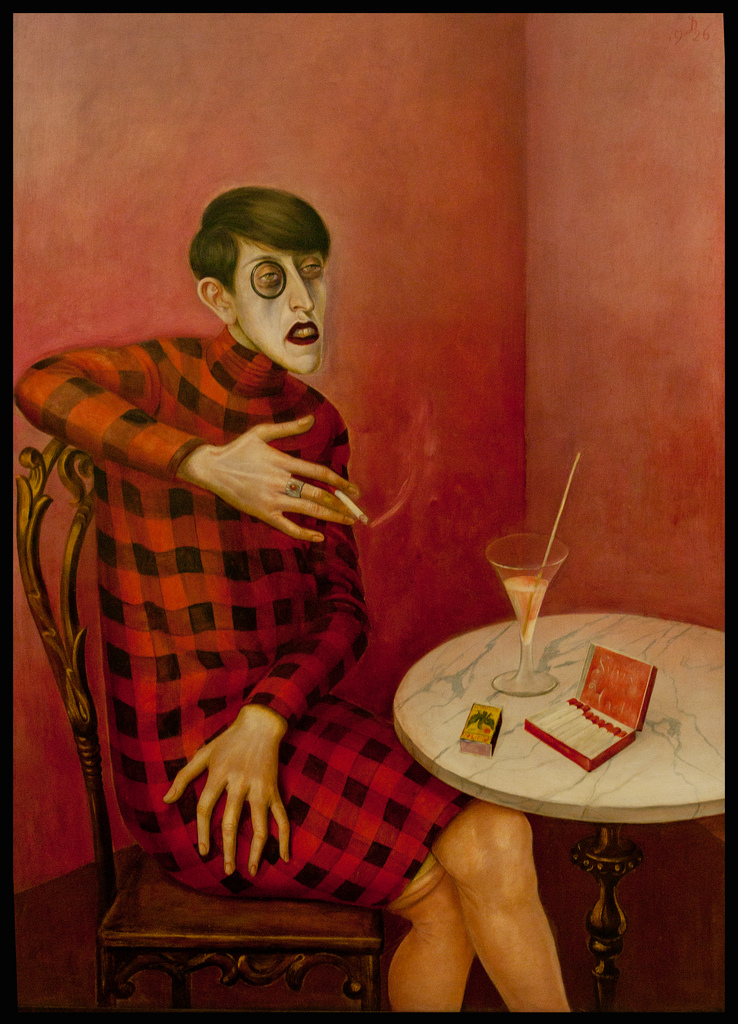Film often imitates art and it’s fun to find references to famous paintings or sculptures when watching movies. One of the more obvious adoptions of a painting into film is Bob Fosse’s use of Otto Dix’s Portrait of Sylvia von Harden in his film, Cabaret (see it at the 0.33 mark in the video below). It made sense; the film was set in the Berlin in 1931 and Otto Dix was working there during the same period. The imagery is artistic and authentic.
In the somewhat shocking portrait of the German writer, Sylvia von Harden sits at a café table, drinking a cocktail and smoking a cigarette. She is ugly and androgynous. Somehow, all of the reds in the painting clash and the plaid pattern along with her dark hair and monocle are jarring. Her hands are claw-like and monstrous and the expression on her face is very unattractive. The real lady was not a looker, but she was not nearly as unappealing as Dix portrayed her.
Dix persuaded Von Harden to sit for him by exclaiming, “I must paint you! I simply must! You are representative of an entire epoch!” Indeed, Dix’s painting became representative of life during the Weimar Republic. Dix, a member of the art movement the Neue Sachlichkeit, or the New Objectivity, was dedicated to a no-nonsense engagement with reality and facts. He recreated his sober observations with exaggerated and manipulated form to heighten the expressive content. In essence, he was a visual reporter, holding up a mirror to society in order to make moral judgments.
Bob Fosse’s Cabaret (1972) – “Willkommen, Bienvenue, Welcome”


